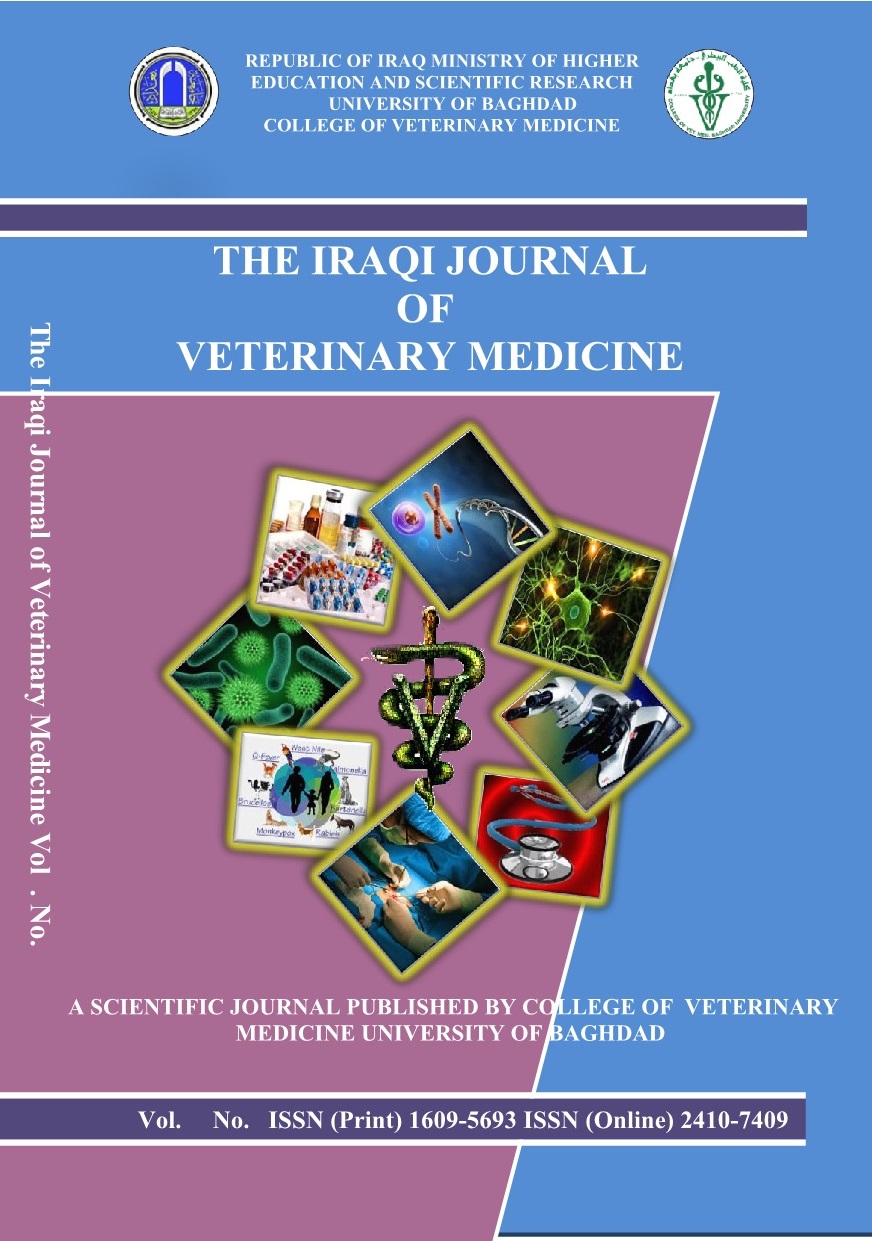Abstract
Thirty-six local dose have been used and were divided in to three groups sacording to weight, in each group twelve dose. In the first group the weights of the dose were higher than ( 2.5 kgs) and less than (3 kgs). The second groups was higher than 3 kgs) and less than (3.5 kgs). The third group was higher than (3.5 kgs) and less than (4 kgs). The aim of this study was to obtain the effect of doe weight on her reproductive efficiency (gestation period, litter size, litter weight at birth and weaning, growth rate of offspring preweaning, conception rate and preweaning mortility).
The weight of the doe had no significant effect upon the gestation period and this period was 30.9, 31.2, 31.3 days for the three groups respectively, on the other hand the litter size was affected significantly by doe weight and litter size was at birth and preaweaning (5.1 , 5.8 and 6.2), (4.5, 5.3 and 5.7) for the three groups respectively. The offspring weight at birth and weaning was affected significantly by doe weight and this weight was (40.1 , 48.2 and 53.3 gms), (203.6, 227.5 and 233.8 gms) for the three groups respectively while the conception rate was not affected by doe weight. The mortility percentage in the prewaning period was not significantly by doe weight
The weight of the doe had no significant effect upon the gestation period and this period was 30.9, 31.2, 31.3 days for the three groups respectively, on the other hand the litter size was affected significantly by doe weight and litter size was at birth and preaweaning (5.1 , 5.8 and 6.2), (4.5, 5.3 and 5.7) for the three groups respectively. The offspring weight at birth and weaning was affected significantly by doe weight and this weight was (40.1 , 48.2 and 53.3 gms), (203.6, 227.5 and 233.8 gms) for the three groups respectively while the conception rate was not affected by doe weight. The mortility percentage in the prewaning period was not significantly by doe weight
Keywords
Rabbits
Reproductive
weight
Abstract
استخدمت في هذه الدراسة (٣٦) أرنبة محلية وزعت لثلاث مجا ميع مختلفة اعتمادا على وزن الجسم فالمجموعة الأولى كانت أكبر من ٢,٥ كغم وأقل من 3 كغم والمجموعة الثانية أكبر من 3 كغم وأقل من ٣.٥ كغم والمجموعة الثالثة اكبر من ٣,٥ كغم وأقل من ٤ كغم وضمت كل مجموعة (۱۲) أرنبة في ثلاث حظائر بحيث شمل كل معاملة ) مجموعة) ثلاث مكررات وبواقع (٤) إناث في كل مكرر.
لم يكن لوزن الام تأثير معنوي على مدة الحمل. حيث بلغت مدة الحمل ۳۰,۹ ۳۱,۲۰ ، ۳۱,۳ يوما للمجاميع الثلاثة على التوالي بينما صفة عدد المواليد في البطن الواحد قد تأثرت معنويا بوزن الام وبلغت ( ٥,١، ٥,٨ ، ٦,٢ ) و ( ٤,٥ ٠ ٥,٣ ، ٥,٧ ) عند الميلاد والفطام للمجاميع الثلاثة على التوالي..
أدى وزن الام إلى وجود فروق معنوية على مستوى احتمال 0% بين اوزان الصغار عند الميلاد والفطام وقد بلغت ( ٤٠,١ ، ٤٨,٢ ، ٥٣,٣ غرام) و ( ٢٠٣,٦ ، ٢٢٧.٥ ، ۲۳۳,۸ غرام ) على التوالي للمجاميع الثلاثة في حين لم يكن لوزن الام تأثيرا معنويا على نسبة التفوق والهلاكات) في ماحلة ما بعد القطام وكذا نسبة الاخصاب
لم يكن لوزن الام تأثير معنوي على مدة الحمل. حيث بلغت مدة الحمل ۳۰,۹ ۳۱,۲۰ ، ۳۱,۳ يوما للمجاميع الثلاثة على التوالي بينما صفة عدد المواليد في البطن الواحد قد تأثرت معنويا بوزن الام وبلغت ( ٥,١، ٥,٨ ، ٦,٢ ) و ( ٤,٥ ٠ ٥,٣ ، ٥,٧ ) عند الميلاد والفطام للمجاميع الثلاثة على التوالي..
أدى وزن الام إلى وجود فروق معنوية على مستوى احتمال 0% بين اوزان الصغار عند الميلاد والفطام وقد بلغت ( ٤٠,١ ، ٤٨,٢ ، ٥٣,٣ غرام) و ( ٢٠٣,٦ ، ٢٢٧.٥ ، ۲۳۳,۸ غرام ) على التوالي للمجاميع الثلاثة في حين لم يكن لوزن الام تأثيرا معنويا على نسبة التفوق والهلاكات) في ماحلة ما بعد القطام وكذا نسبة الاخصاب
